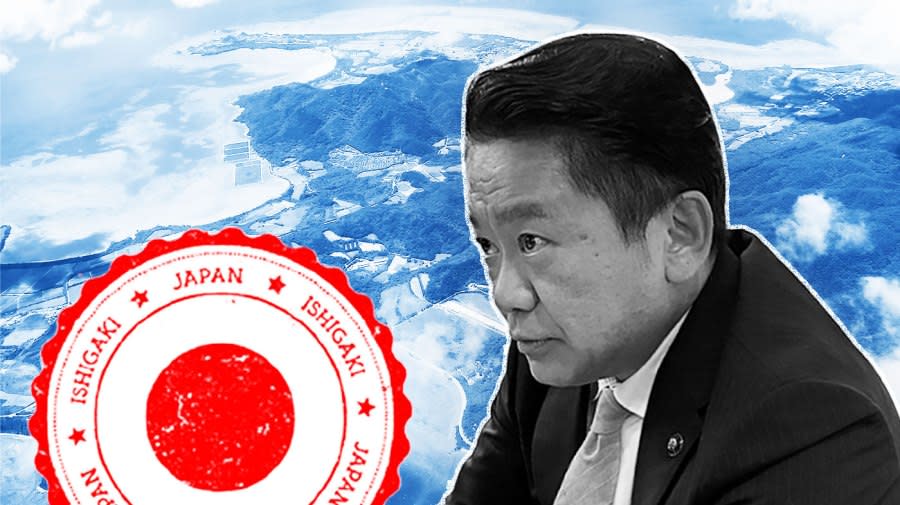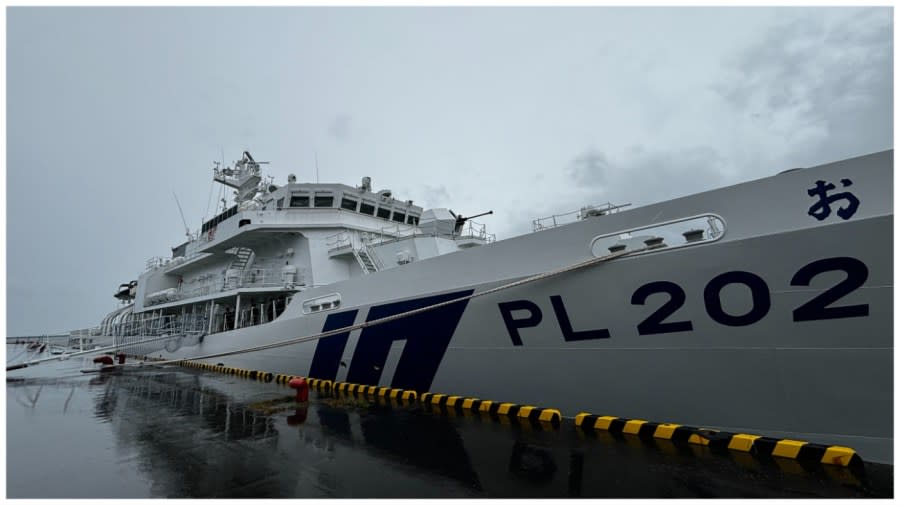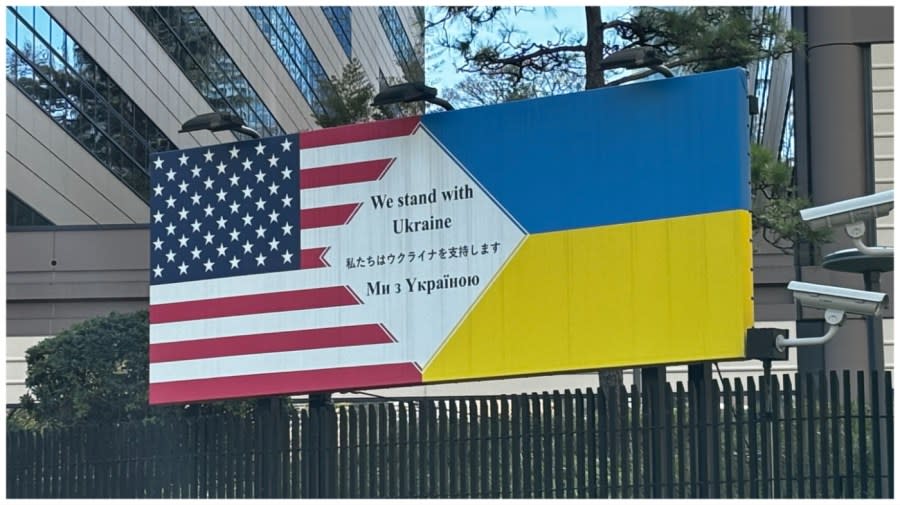Why Japan can’t escape US-China hostility over Taiwan

- Oops!Something went wrong.Please try again later.
- Oops!Something went wrong.Please try again later.
ISHIGAKI, Japan – For Yoshitaka Nakayama, the mayor of the tiny Japanese island of Ishigaki, the threat of a hostile China hits very close to home. This tropical tourist destination of 50,000 full-time residents is just 124 miles off the west coast of Taiwan, and he fears a refugee crisis if China carries out aggression against the nearby island nation.
“We haven’t prepared for it at all,” he said in an interview with The Hill at the island’s City Hall.
“We are expressing our concern to the national government, and it’s kind of very difficult work to draw a line from our own people and people of Taiwan evacuating. … The war is not likely to happen, but the risk is always there.”
Japan’s role in the region, the world — and its position between the global heavyweights of the United States and China — is undergoing a massive shift.
Tokyo can’t afford to entirely alienate China, its largest trading partner and the priority destination for Japanese business investment. Yet Japan has firmly tied its future to the U.S. — its security is guaranteed under America’s nuclear arsenal — raising the risk of being collateral damage in any U.S.-Sino conflict, whether that’s diplomatic or kinetic.
And Taiwan is at the top of potential flashpoints of conflict. President Biden has said he is committed to sending U.S. troops to Taiwan’s defense if China invades. That position has soured relations with Beijing, which views Washington’s support for Taipei as unacceptable, and risks blowback on Japan.
“There is an impact on tensions between China and the United States on our bilateral ties, very much,” said Makoto Nishida, a member of Japan’s parliament for the Komeito party, which is a junior member of the coalition headed by Prime Minister Fumio Kishida’s Liberal Democratic Party.
Nishida traveled to China in November as part of a Komeito delegation, with the goal of resolving at least three points of tension between Tokyo and Beijing: China’s ban on Japanese seafood imports after Japan began releasing treated nuclear wastewater from the Fukushima Power Station; reviving visa-free travel between Japan and China; and releasing Japanese nationals detained in China.
The delegation walked away from the trip with no immediate progress. While discussions continue over seafood imports and visa-free travel, there was no movement on detained Japanese citizens, he said.
Nishida, whose main area of focus is economics, studied in China and has deep ties to the country, and the Komeito in general promotes closer and friendlier ties with Beijing.
“It is a sure fact that Japan-U.S. relations and their alliance is a cornerstone for Japan’s diplomacy,” Nishida said through a translator during an interview at his office with The Hill.
“But at the same time, Japan cannot cut up our ties with China.”

A major shift
As China has asserted a more aggressive foreign policy over the past decade, Japan has beefed up its own military posture and alliances.
Beijing has raised regional alarm with provocative maneuvers in shared waters and efforts at economic coercion; clamping down on Hong Kong’s freedom and democracy and threats to subsume Taiwan.
Japan in turn has pushed the boundaries of the constitutional restrictions on its military, building up counterstrike capabilities in the event of a Chinese invasion or blockade of Taiwan that could divert America’s military resources.
“With some of the very advanced missile capabilities [of adversaries], at this moment, there’s no way to defend our country,” a Japanese Ministry of Defense official told The Hill.
“That’s why we have to change our policy … to possess counter strike capability, and increase the level of deterrence, to stop the intention of aggression, that’s a very big difference of the technological shift in the security arena.”
The focus for both Japan and the U.S. is to give Japan the ability to not only scale up its air defenses but have the ability to take out the launching systems of adversaries, and ultimately decrease its reliance on the U.S. military.
“We have set a goal, that in five years, we will have the initial operation of counter strike capability with a variety of long range missiles,” to include Japanese-produced and U.S.-procured missiles, the official said.
Tension at sea

At the 10th regional headquarters in Kagoshima, in southern Japan, Inoue Tatsuhiro is the captain of the brand new, 3,500-ton patrol vessel, the PL202 OSUMI — increasing the region’s fleet to 11 vessels and 10 helicopters.
It’s a symbol of Japan pouring more resources into its coast guard, a policing force that responds to emergencies in territorial waters but is also charged with enforcing maritime laws that, in Tokyo’s view, Beijing is regularly testing.
The 10th region maintains a Japanese presence around the Senkaku Islands, a flashpoint of tension with China, which claims the territory and calls them the Diaoyu Islands.
“When I was young, I saw a limited number of vessels,” said Tatsuhiro, reflecting on his graduation from the coast guard academy in 1984. “Now the ships are becoming larger and the number of them is occurring at an unprecedented scale for me.”
The PL202 OSUMI was inaugurated in November 2023. Among its stock includes a 40 mm anti-aircraft cannon and a water cannon mounted on the bow.
Most recently, the 10th region helped respond to a 7.5 magnitude earthquake that struck northeastern Japan on New Year’s Day — a reminder of the rising threat of climate change. But potential action from China — which boasts the world’s largest navy — remains front of mind.
The Japanese government is keeping track of how often Chinese coast guard vessels intrude into Japan’s territorial waters in what it describes as provocations — beginning in 2012, it has monitored Chinese intrusions between 19 and 52 times each year.
Last year saw the most frequent and prolonged presence of Chinese vessels in the disputed waters, at 352 days. And Chinese vessels were present in the waters around the Senkaku Islands nearly every day in January of this year, according to government statistics.
China’s claims to the islands appear to be part of its argument that the islands are affiliated with Taiwan, claiming both as part of greater China, said Satoru Mori, professor of international politics at Tokyo’s Keio University.
“It wasn’t really clear whether there is a sort of a unified thinking behind what China’s coast guard does, vis-a-vis Taiwan island and also, Senkaku Islands,” Mori said. “But, yeah, we are actually beginning to see a sort of a very subtle change in the way the Chinese are acting, vis-a-vis the Senkaku islands.”
Eyes on Ukraine

The Japanese government, and many of its people, have also made a connection between Chinese President Xi Jinping’s ambitions in the region and Russian President Vladimir Putin’s invasion of Ukraine.
The Japanese government has been a staunch supporter of Ukraine, underscoring that Tokyo views a victory or defeat for Putin as directly linked to emboldening or deterring Xi from carrying out aggression in the region.
Japan, as a member of the Group of Seven nations, has operated in near lockstep with other member states on retaliatory measures against Russia. And what it can’t provide in lethal military support — its constitution blocks weapons exports — it has sought to make up in nonlethal, economic and humanitarian assistance.
Last month, Kishida hosted a conference promoting Ukraine’s reconstruction and Japanese investment in the country. But Ukraine’s military must be able to defend the skies from Russian attacks to make business viable — which depends, mostly, on American military support.
The United States is “the only provider of that extent of assistance, but you have to live with it. It’s a special responsibility,” a Japanese foreign ministry official told The Hill. “And you have too many allies and friends that rely on you. That’s why we’re always watching the movement, every step of the way, on Capitol Hill.”
The months-long delay for Congress to deliver on more Ukraine aid is being watched closely in Tokyo, the official said, as are as the fractious fights among Republicans, and the very real possibility of former President Trump returning to power, which would further hamper aid for Ukraine.
“We are carefully watching what the U.S. politics are going to be like, because it’s the important ally. From my own occupational point of view, the future posture of U.S. politics and future posture of U.S. policy for Ukraine, is a very big element for us,” the official said.
Among the wing of Republican lawmakers opposed to U.S. support for Ukraine are those who say America’s military priority should be directed toward Asia, and bolstering defenses for Taiwan. Japan wants the U.S. to do both.
“We don’t want to see reassurance and enhancement of deterrence in the Indo Pacific, with cost incurred in Ukraine or European security,” Mori said.
Back in Ishigaki, Mayor Nakayama has taken lessons from Russia’s 2014 invasion and annexation of Ukraine’s Crimean peninsula. He worries about Chinese spies infiltrating Ishigaki among the refugees desperately fleeing Taiwan, and sabotaging the island’s communication lines.
“What I’m afraid of, the example of Russia, what they did in the Crimean peninsula [in 2014], I’m afraid of how China may act after they cut all our communications,” he said.
Nakayama said he has observed China building up its strength at sea over the past 10 years.
“The Chinese ships approaching this area — I can see that the size of the vessels are getting bigger, as well as a number of vessels, and the crew are more skilled,” he said.
“Before, when the typhoon came, their ships were forced to go back. Recently, even with stormy seas, they just stay in the vicinity of Ishigaki. That is the pressure we are mostly concerned with.”
Disclosure: The reporter traveled to Japan at the expense of the Foreign Press Center Japan, a nonprofit foundation that receives funding from the Japanese government.
For the latest news, weather, sports, and streaming video, head to The Hill.
